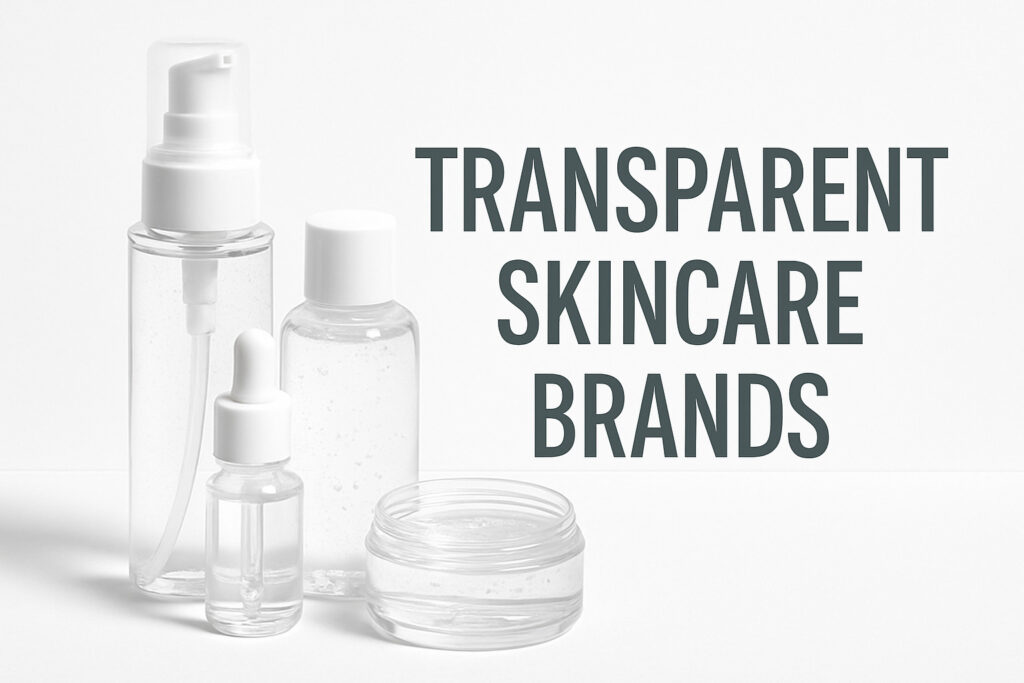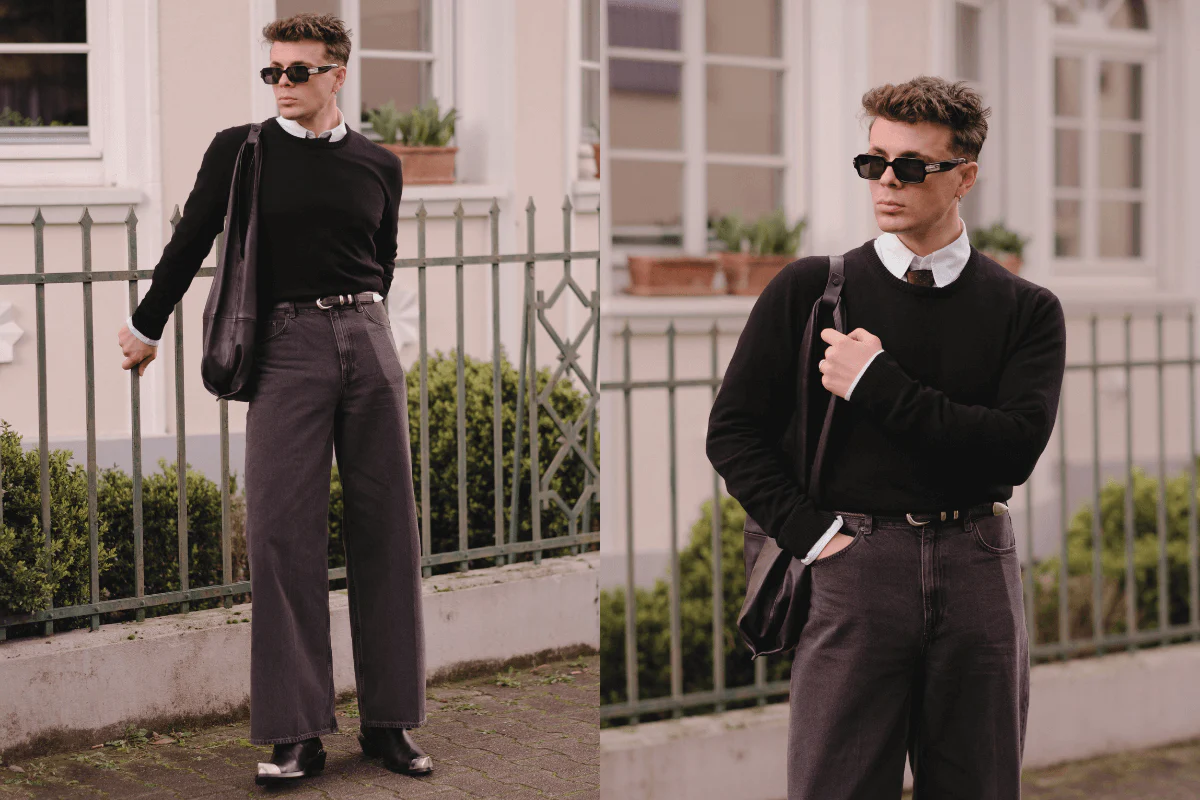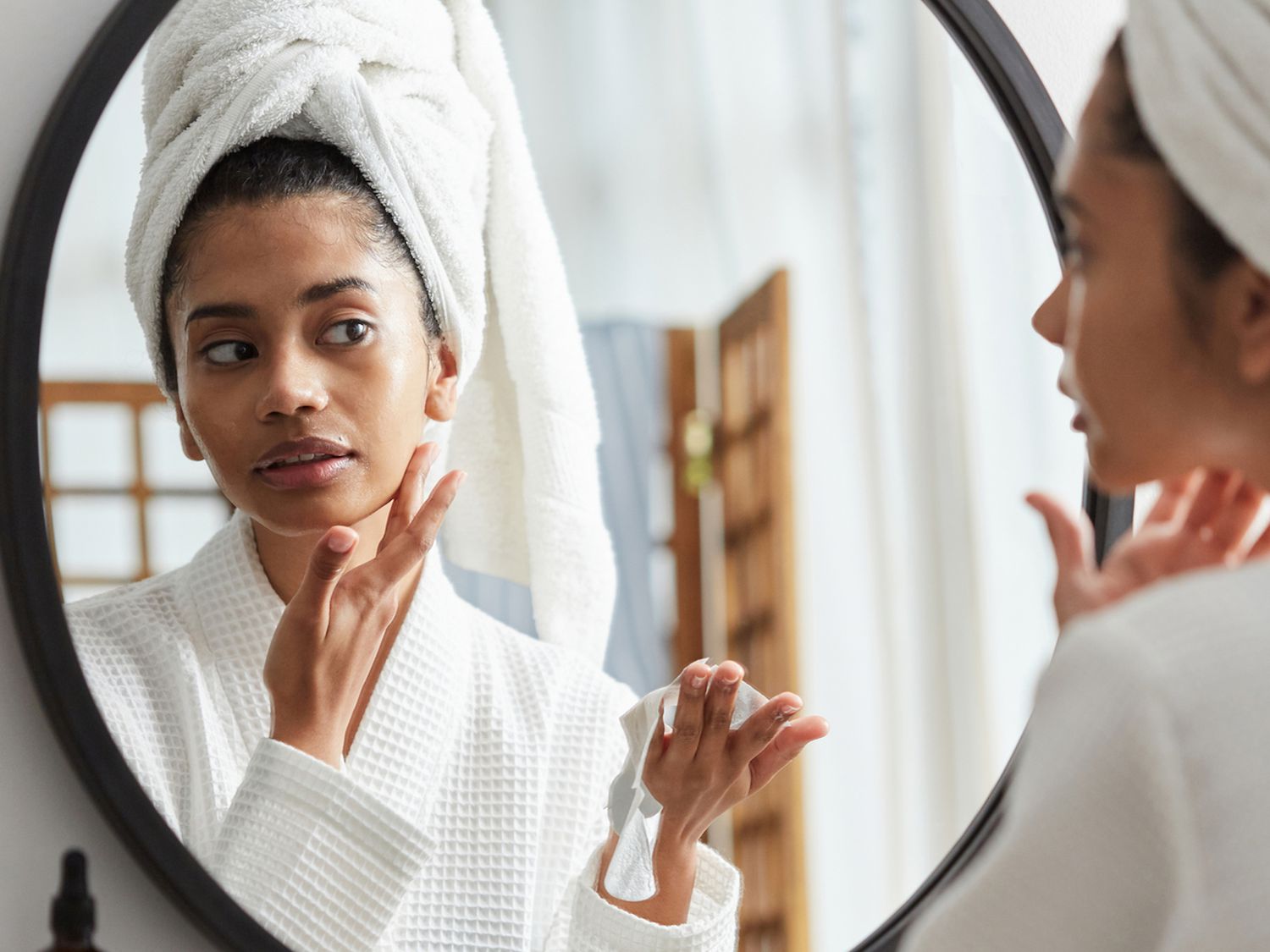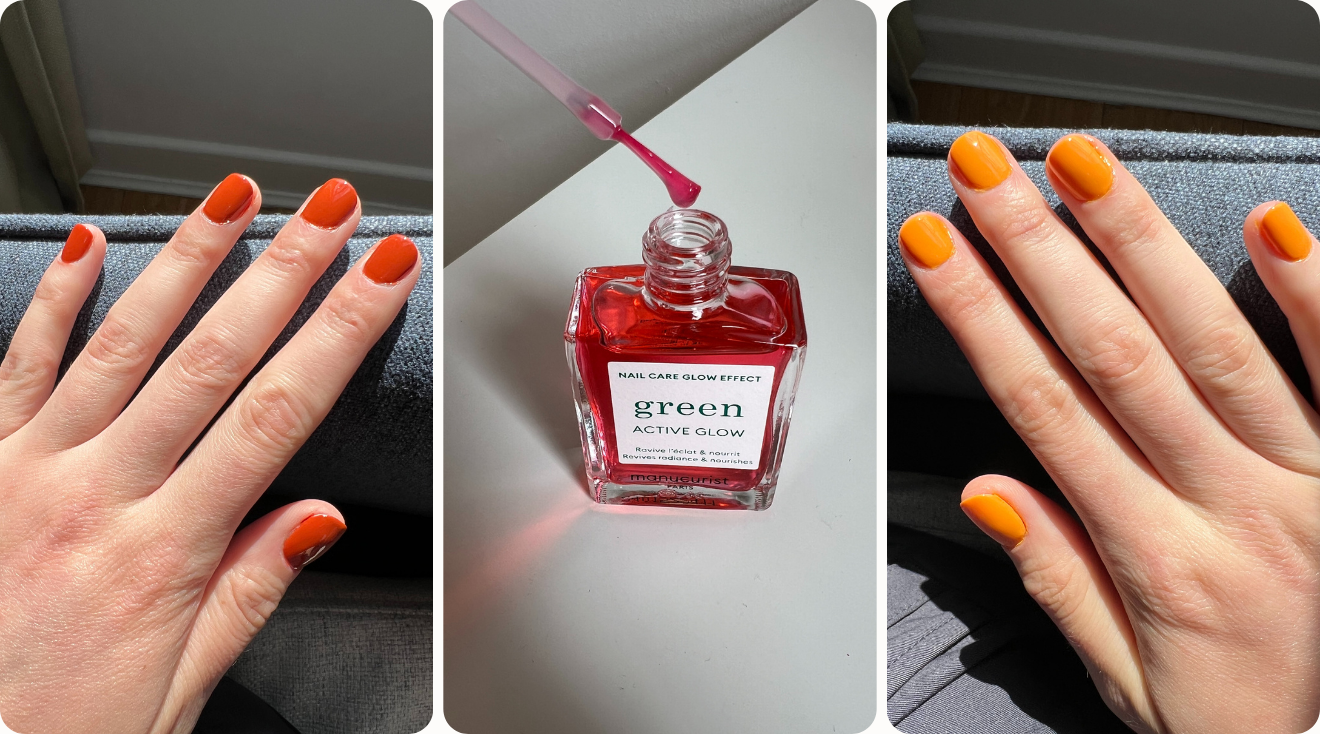Why Transparent Skincare Brands Are Essential for Conscious Consumers
Transparent skincare brands represent a shift in beauty where honesty replaces marketing hype. These companies publish complete ingredient lists, reveal concentration percentages, and openly share their sourcing practices.
Top Transparent Skincare Brands for 2025:
• 100% PURE – Full INCI disclosure, fruit-pigmented makeup, carbon-neutral certified
• LILIXIR – Research sources published, complete ingredient warnings, no “free-from” marketing
• Transparent Lab – Patented encapsulation technology, concern-based formulations
• Dieux Skin – Price breakdowns showing formula costs, 8-week clinical trials published
• Open Formula – Minimal 4-ingredient serums vs. 20+ in conventional brands
The clean beauty market is expanding rapidly as consumers demand accountability. Unlike “natural” or “organic” labels that focus on ingredient origin, transparency means full disclosure of what’s actually in your products and why.
“The majority of products on the market now are created with chemicals that have been around for decades—and many have been linked to cancer, asthma, birth abnormalities, and infertility,” notes skincare transparency advocate LILIXIR. This reality drives the need for brands that show their complete formulation cards.
True transparency goes beyond ingredient lists. Leading brands now share supplier relationships, manufacturing processes, clinical test results, and even cost breakdowns. They’re proving that effective skincare doesn’t require secret formulas or misleading claims.

What Does Transparency Mean in Skincare?
Think of transparency in skincare like having a conversation with your best friend about what’s really in that fancy serum. Transparent skincare brands don’t hide behind fancy marketing speak—they tell you exactly what goes into their products and why they chose each ingredient.
Real transparency means complete ingredient disclosure with those hard-to-pronounce INCI names spelled out in full. It means supply-chain traceability so you know where your shea butter actually comes from. And here’s the refreshing part: truly transparent brands even admit when they use safe synthetics because sometimes lab-created ingredients work better than what nature provides.
The best transparent skincare brands go way beyond basic requirements. They reveal concentration percentages of active ingredients (finally, you can see if that vitamin C serum actually contains enough vitamin C to matter). They share research sources and clinical trial results. Some even break down costs to show you exactly what you’re paying for—formulation, packaging, fair wages, and yes, some profit too.
Even packaging choices reflect this honesty. Many brands literally let you see what you’re buying through clear glass containers. Others share detailed information about their recyclable materials and sustainable sourcing. More info about reading labels can help you decode what brands are really telling you through their packaging and labeling choices.
Transparent skincare brands vs. clean beauty
Here’s where things get interesting—these terms aren’t the same thing, even though they often get mixed up. Clean beauty typically focuses on what’s not in your products. No parabens, no sulfates, no synthetic fragrances. It’s like a restaurant advertising “no MSG” without telling you what seasonings they actually use.
Transparent skincare brands flip this approach completely. Instead of highlighting what they avoid, they tell you exactly what they include and explain their reasoning. Clean beauty brands might plaster “free-from” statements across their packaging, while transparent brands publish complete formulations with detailed explanations.
The overlap happens when brands accept both philosophies. But transparency allows for more nuanced choices. A transparent brand might use a safe synthetic preservative because it’s more effective and sustainable than natural alternatives—and they’ll tell you exactly why they made that choice.
Clean beauty sometimes falls into the “chemical-free” trap (spoiler alert: even water is technically a chemical). Transparency cuts through this confusion by focusing on safety data and honest communication rather than fear-based marketing.
Why transparency matters
Your safety comes first, and transparency makes informed decisions actually possible. When brands publish complete ingredient lists with concentration percentages, you can spot potential allergens or ingredients that don’t play well with your skin. No more guessing games or surprise reactions.
Trust builds naturally when companies share their complete story—the successes, the reformulations, even the occasional failures. When a brand shows you their clinical trial results (both positive and neutral), they’re proving they care more about your results than their marketing claims.
Environmental impact becomes crystal clear through transparent practices. When brands disclose their sourcing practices, manufacturing processes, and packaging materials, you can make choices that align with your values. Scientific research on ingredient safety shows that transparency enables better environmental choices throughout the entire supply chain.
The ripple effect extends beyond individual purchases. Transparent brands push the entire industry toward better practices. When one company publishes their supply chain details, others feel pressure to do the same. This collective shift benefits everyone who cares about what goes on their skin.
How to Spot Transparent Skincare Brands in 2025

Finding genuinely transparent skincare brands feels like detective work sometimes. But once you know what to look for, spotting the real deal becomes much easier. Think of it as developing a sixth sense for skincare honesty.
The first place to start your investigation is the ingredient list itself. True transparent skincare brands don’t just slap an INCI list on their website and call it a day. They go deeper. You’ll find complete ingredient lists with actual concentration percentages for active ingredients. Even better, they explain why each ingredient earned its spot in the formula.
Some brands take this transparency to the next level by sharing what they don’t include. Their “NO Lists” can contain thousands of excluded chemicals, giving you a clear picture of their safety standards. It’s refreshing when a company tells you exactly what they’ve decided to avoid and why.
Third-party testing results separate the serious players from the marketing machines. Look for brands that submit their products to independent labs and actually publish those results. No hiding behind vague claims here—just real data you can examine for yourself.
Here’s where things get really interesting: some brands now break down their pricing completely. They’ll show you exactly how much goes toward ingredients, packaging, labor, and shipping. This level of financial transparency eliminates the mystery markup that makes you wonder if you’re paying for the product or just clever marketing.

Key packaging cues for transparent skincare brands
Packaging choices reveal a lot about a brand’s commitment to honesty. Clear glass containers literally show you what you’re buying—no surprises about color, texture, or how much product you’re actually getting. There’s something reassuring about seeing exactly what’s inside that bottle.
Recycled glass and bamboo components signal that a brand cares about environmental impact, not just product appearance. When companies use sustainable materials, they usually want to tell you about it. Look for detailed information about what percentage of their packaging can be recycled and how to dispose of it properly.
Airless pump technology appears frequently among transparent brands because it protects the product without hiding it. These systems prevent oxidation while maintaining that visual honesty that builds trust between you and the brand.
Certifications & seals that count
Third-party certifications act like independent referees in the beauty game. USDA Organic certification means at least 95% of ingredients are certified organic, with strict processing standards that get audited regularly. ECOCERT focuses specifically on natural and organic cosmetics with additional environmental requirements.
Leaping Bunny certification goes beyond simple “cruelty-free” claims. This program requires no animal testing throughout the entire supply chain, with annual re-audits by independent third parties. EWG verification means products meet strict safety standards and avoid ingredients that raise health concerns.
More info about clean beauty terms can help you decode what these certifications actually guarantee versus what they simply suggest.
Hidden red flags & greenwashing traps
Watch out for partial ingredient disclosure—the beauty industry’s version of telling half-truths. When brands only highlight their star ingredients while hiding the complete formulation, that’s a red flag waving in your face. Phrases like “and other natural ingredients” or incomplete INCI lists should make you suspicious.
Vague claims without supporting data represent classic greenwashing territory. Anyone can say their product is “clinically proven,” but transparent brands share the actual study details. They’ll tell you how many people participated, how long the study lasted, and what specific results they measured.
The fragrance loophole might be the sneakiest trick in the book. That innocent word “fragrance” on an ingredient list can hide dozens of undisclosed chemicals. Truly transparent companies either skip fragrances entirely or fully disclose every aromatic component they use.
Evaluation Criteria for 2025’s Most Transparent Labels
When we’re evaluating transparent skincare brands, we need to look beyond pretty packaging and marketing promises. After years of researching the beauty industry, we’ve developed a comprehensive framework that examines every aspect of brand honesty—from ingredient disclosure to business ethics.
The landscape of transparency varies dramatically across different certifications. While USDA Organic requires 95% certified organic ingredients and provides detailed supplier verification, it doesn’t mandate price breakdowns or clinical data sharing. ECOCERT focuses heavily on natural percentages and sustainable sourcing but leaves pricing transparency optional. Leaping Bunny excels at supply chain visibility for cruelty-free verification through annual re-audits, while EWG Verified emphasizes ingredient safety ratings and manufacturing transparency.
What’s fascinating is how few certifications actually require the financial transparency that truly empowers consumers. Most focus on ingredient safety or environmental impact—both crucial—but leave the business side largely opaque.
| Certification | Ingredient Transparency | Supply Chain Visibility | Clinical Data | Price Breakdown |
|---|---|---|---|---|
| USDA Organic | 95% certified organic ingredients listed | Certified organic suppliers | Required safety testing | Not required |
| ECOCERT | Natural/organic percentages disclosed | Sustainable sourcing standards | Environmental impact data | Not required |
| Leaping Bunny | Complete supplier disclosure | No animal testing verification | Annual re-audits | Not required |
| EWG Verified | All ingredients rated for safety | Manufacturing transparency | Toxicity assessments | Not required |
Ingredient-level transparency—beyond the buzzword
Real ingredient transparency goes way beyond slapping “natural” on a label and calling it a day. We’re talking about complete INCI lists with actual concentration percentages for every active component. When brands like Transparent Lab tell you their cleanser contains exactly 5% Urea and their serum contains 15% Urea, that’s transparency in action.
Concentration disclosure matters more than most people realize. Think about it—a product claiming to contain Vitamin C could have anywhere from 0.1% to 20%. That’s the difference between a marketing gimmick and an effective treatment. Truly transparent skincare brands don’t hide behind “proprietary blend” language that keeps you guessing about what you’re actually getting.
The best brands also publish comprehensive avoidance lists that clearly explain what they won’t use and why. These databases help you understand the brand’s philosophy while making informed choices based on your personal sensitivities. It’s refreshing when companies are as clear about what they exclude as what they include.
Packaging transparency balances efficacy & sustainability
The packaging choices of transparent skincare brands tell a story about their values. Clear glass containers aren’t just aesthetically pleasing—they literally let you see what you’re buying. You can observe the product’s color, texture, and consistency, plus track how much remains as you use it.
Smart brands balance this visual honesty with product protection. Airless pump technology prevents oxidation while maintaining transparency. Recyclable materials with clear disposal instructions show environmental responsibility without compromising product integrity.
Refill programs represent the gold standard of packaging transparency. These initiatives demonstrate genuine commitment to sustainability while proving that brands trust their products enough to encourage long-term relationships. Scientific research on sustainable packaging confirms that these circular approaches benefit both consumers and the environment.
Business transparency: cost & ethics
Here’s where things get really interesting. True cost breakdowns reveal exactly what you’re paying for when you buy skincare. This radical financial honesty eliminates the mystery markups that plague much of the beauty industry. When brands share their actual formula costs, packaging expenses, labor, and shipping, they’re betting on transparency over traditional profit maximization.
Fair wage disclosure and supplier relationship transparency demonstrate that ethics extend beyond product formulation. The brands leading this movement share information about their manufacturing partnerships and labor practices. They understand that true transparency encompasses every aspect of their business operations.
Cruelty-free audits with published results provide ongoing verification rather than one-time certifications that might become outdated. Annual third-party audits ensure continued compliance with stated values, giving you confidence that your purchases align with your principles.
Future Trends Shaping Transparent Skincare Brands
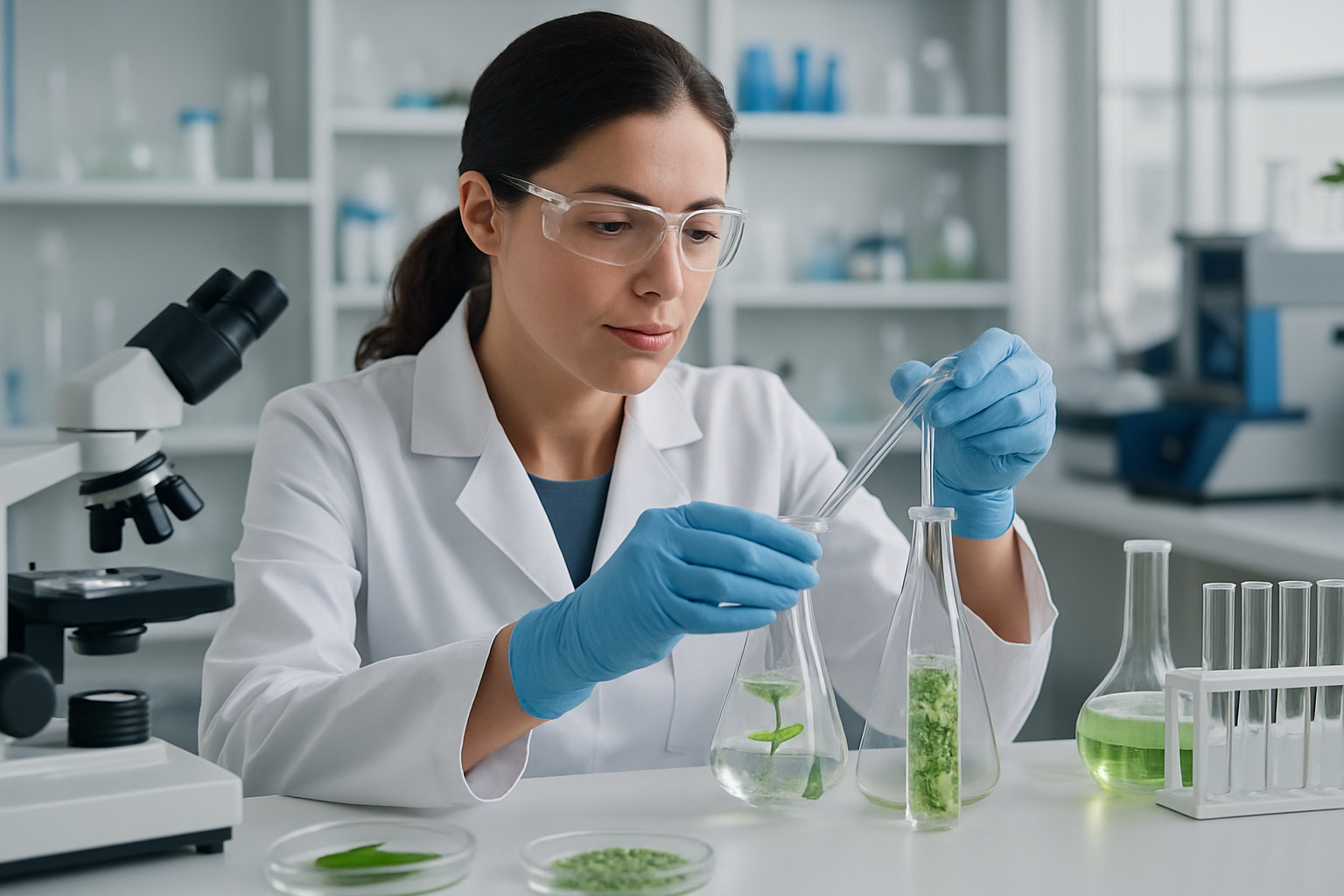
The skincare industry is evolving at breakneck speed, and transparent skincare brands are leading the charge with innovations that make honesty easier than ever before. We’re witnessing a beautiful convergence of technology and sustainability that’s reshaping how brands connect with conscious consumers.
Biotechnology actives represent one of the most exciting developments in transparent formulation. These lab-grown ingredients, created through fermentation and cellular agriculture, offer something remarkable: complete traceability from creation to your bathroom shelf. Unlike traditional plant extracts that vary based on weather and soil conditions, biotech ingredients provide consistent quality while eliminating concerns about overharvesting or environmental damage.
The real game-changer? AI-powered INCI scanning apps that turn your smartphone into a personal skincare detective. These clever tools will soon analyze any product’s ingredient list in seconds, cross-referencing components with your personal sensitivity profile and the latest safety research. No more squinting at tiny labels or googling mysterious chemical names.
Refill stations are popping up everywhere, changing how we think about packaging waste. Forward-thinking brands are creating programs where you can top up your favorite serum or moisturizer while tracking your environmental impact through digital platforms. It’s like having a coffee shop loyalty program, but for saving the planet.
Tech-enabled consumer empowerment
Imagine scanning a QR code on your cleanser and watching the founder explain exactly why they chose each ingredient. That’s the future transparent skincare brands are building with QR code ingredient videos. Instead of deciphering complex INCI names, you’ll get friendly, jargon-free explanations of what each component does and where it comes from.
Blockchain traceability might sound intimidating, but it’s actually beautifully simple. This technology creates an unbreakable digital trail from raw materials to finished products. Want to know if your vitamin C serum’s ingredients were ethically sourced? Just scan your phone and follow the complete journey.
These innovations democratize skincare knowledge, making transparency accessible whether you have a chemistry degree or just want to know what you’re putting on your face.
Sustainability goes circular
The future belongs to closed-loop packaging systems that eliminate waste entirely. Picture returning your empty jar to be professionally cleaned, refilled, and sent back out into the world. Some brands are already piloting these programs, creating truly circular product lifecycles that would make Mother Earth proud.
Compostable refills made from plant-based materials are replacing traditional packaging for many products. These innovative pouches maintain product integrity while ensuring packaging returns safely to the soil when you’re done. It’s packaging that literally grows into something beautiful.
Renewable energy labs powered by solar and wind are becoming the new standard for environmentally conscious brands. When your favorite serum is formulated using clean energy, that’s transparency you can feel good about. More info about clean beauty movement shows how these environmental commitments increasingly drive consumer loyalty.
The most exciting part? These aren’t distant dreams—they’re happening right now. Carbon-negative formulas and regenerative sourcing practices are already emerging from innovative brands that understand transparency isn’t just about ingredients—it’s about taking responsibility for our planet’s future.
Frequently Asked Questions about transparent skincare brands
Are transparent skincare brands always 100% natural?
Here’s the thing that might surprise you: transparent skincare brands aren’t necessarily 100% natural, and honestly, that’s perfectly fine. What makes them special isn’t avoiding all synthetic ingredients—it’s being completely honest about everything they use and why.
Think about it this way: even water is technically a chemical. So when brands claim to be “chemical-free,” they’re not being truthful from the start. The smartest transparent brands understand that some synthetic ingredients are actually safer, more effective, or better for the environment than their natural counterparts.
What sets these brands apart is their honesty. They’ll tell you exactly which ingredients are natural, which are lab-created copies of natural compounds, and which are purely synthetic. More importantly, they explain why they made each choice. Maybe that synthetic preservative keeps your serum stable for months instead of weeks. Maybe that lab-grown peptide delivers better results than plant extracts.
The beauty of transparency is that you get to make informed decisions based on complete information, not marketing fluff.
How do I verify a brand’s ingredient concentrations?
Verifying ingredient concentrations takes a bit of detective work, but it’s totally doable once you know what to look for. Start with the brand’s website—truly transparent skincare brands will publish concentration percentages right there on their product pages, not hide them away.
Clinical trial data is your best friend here. When brands claim their products are “clinically proven,” dig deeper. Ask yourself: proven at what concentration? Transparent companies will share the exact formulations they tested, including specific percentages of active ingredients. If they tested 5% niacinamide but won’t tell you how much is in their commercial product, that’s a red flag.
Some brands go the extra mile with third-party testing certificates. These independent lab reports verify that what’s on the label matches what’s actually in the bottle. It’s like having a neutral referee confirm the brand’s claims.
Here’s a pro tip: if you can’t find concentration information after a few minutes of searching, the brand probably isn’t as transparent as they claim to be.
Do transparent packaging choices affect product stability?
You’re absolutely right to wonder about this—it’s a real balancing act between showing you what you’re buying and keeping those ingredients fresh and effective. Clear packaging can definitely expose products to light that breaks down certain ingredients, but smart brands have figured out clever solutions.
Many transparent skincare brands use UV-protective glass that looks clear but actually filters out harmful light rays. Others store their products in controlled lighting environments or use amber-tinted glass that still lets you see the product while offering protection.
Airless pump systems are genius for this challenge. You can see your serum or moisturizer, watch how much you have left, and know it’s protected from air exposure that causes oxidation. It’s like having your cake and eating it too.
Some brands choose frosted or lightly tinted glass as a compromise—you can still see the product’s color and texture, but light-sensitive ingredients get some protection. The key is that transparent brands will actually tell you about these considerations instead of leaving you guessing about whether your expensive serum is slowly degrading on your bathroom counter.
Conclusion & Next Steps
The journey toward transparent skincare brands isn’t just about finding better products—it’s about supporting a complete change of how the beauty industry operates. When you choose brands that publish full ingredient lists, share clinical data, and reveal their true costs, you’re voting for a future where honesty wins over hype.
We’ve seen how companies like 100% PURE and Dieux Skin are proving that transparency and effectiveness go hand in hand. These brands don’t need to hide behind “proprietary blends” or vague marketing claims because their results speak for themselves. Their openness about everything from supply chains to price breakdowns shows that the beauty industry can do better.
The shift toward transparency benefits everyone. You get safer, more effective products custom to your actual needs. The environment benefits from clearer sustainability practices and honest environmental impact reporting. Even the beauty industry itself becomes more innovative when companies compete on real results rather than marketing magic.
At Beyond Beauty Lab, we believe knowledge is your most powerful beauty tool. The more you understand about ingredients, certifications, and industry practices, the better equipped you become to make choices that truly serve your skin and your values. That’s why we’re here—to cut through the confusion and help you find your way to products that actually work.
The future of skincare is happening right now, and it’s beautifully transparent. Every time you choose a brand that shares their complete formulation, publishes their test results, or breaks down their pricing, you’re supporting this positive change. Your purchasing decisions are creating demand for honesty and accountability across the entire industry.
Ready to dive deeper into ethical beauty? Our comprehensive guide to Clean Beauty Brands will help you find even more companies that are leading the charge toward a more honest, sustainable, and effective approach to skincare.

